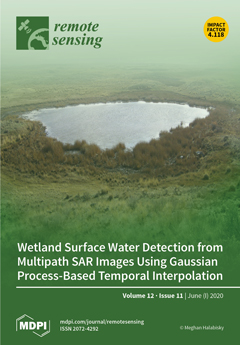Gully erosion has become one of the major environmental issues, due to the severity of its impact in many parts of the world. Gully erosion directly and indirectly affects agriculture and infrastructural development. The Golestan Dam basin, where soil erosion and degradation are
[...] Read more.
Gully erosion has become one of the major environmental issues, due to the severity of its impact in many parts of the world. Gully erosion directly and indirectly affects agriculture and infrastructural development. The Golestan Dam basin, where soil erosion and degradation are very severe problems, was selected as the study area. This research maps gully erosion susceptibility (GES) by integrating four models: maximum entropy (MaxEnt), artificial neural network (ANN), support vector machine (SVM), and general linear model (GLM). Of 1042 gully locations, 729 (70%) and 313 (30%) gully locations were used for modeling and validation purposes, respectively. Fourteen effective gully erosion conditioning factors (GECFs) were selected for spatial gully erosion modeling. Tolerance and variance inflation factors (VIFs) were used to examine the collinearity among the GECFs. The random forest (RF) model was used to assess factors’ effectiveness and significance in gully erosion modeling. An ensemble of techniques can provide more accurate results than can single, standalone models. Therefore, we compared two-, three-, and four-model ensembles (ANN-SVM, GLM-ANN, GLM-MaxEnt, GLM-SVM, MaxEnt-ANN, MaxEnt-SVM, ANN-SVM-GLM, GLM-MaxEnt-ANN, GLM-MaxEnt-SVM, MaxEnt-ANN-SVM and GLM-ANN-SVM-MaxEnt) for GES modeling. The susceptibility zones of the GESMs were classified as very-low, low, medium, high, and very-high using Jenks’ natural break classification method (NBM). Subsequently, the receiver operating characteristics (ROC) curve and the seed cell area index (SCAI) methods measured the reliability of the models. The success rate curve (SRC) and predication rate curve (PRC) and their area under the curve (AUC) values were obtained from the GES maps. The results show that the ANN model combined with two and three models are more accurate than the other combinations, but the ANN-SVM model had the highest accuracy. The rank of the others from best to worst accuracy is GLM, MaxEnt, SVM, GLM-ANN, GLM-MaxEnt, GLM-SVM, MaxEnt-ANN, MaxEnt-SVM, GLM-ANN-SVM-MaxEnt, GLM-MaxEnt-ANN, GLM-MaxEnt-SVM and MaxEnt-ANN-SVM. The resulting gully erosion susceptibility models (GESMs) are efficient and powerful and could be used to improve soil and water conservation and management.
Full article





